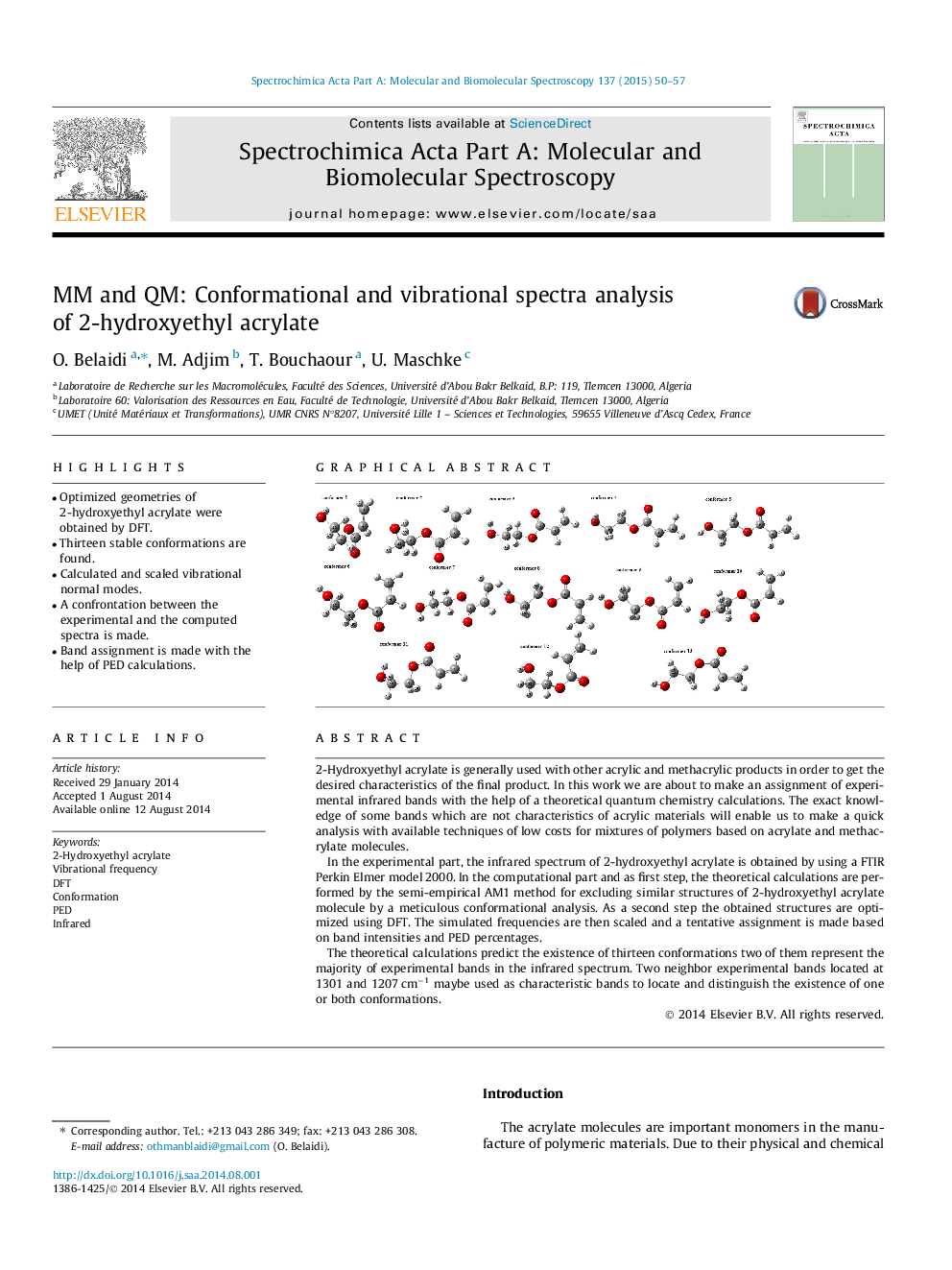| Article ID | Journal | Published Year | Pages | File Type |
|---|---|---|---|---|
| 1229213 | Spectrochimica Acta Part A: Molecular and Biomolecular Spectroscopy | 2015 | 8 Pages |
•Optimized geometries of 2-hydroxyethyl acrylate were obtained by DFT.•Thirteen stable conformations are found.•Calculated and scaled vibrational normal modes.•A confrontation between the experimental and the computed spectra is made.•Band assignment is made with the help of PED calculations.
2-Hydroxyethyl acrylate is generally used with other acrylic and methacrylic products in order to get the desired characteristics of the final product. In this work we are about to make an assignment of experimental infrared bands with the help of a theoretical quantum chemistry calculations. The exact knowledge of some bands which are not characteristics of acrylic materials will enable us to make a quick analysis with available techniques of low costs for mixtures of polymers based on acrylate and methacrylate molecules.In the experimental part, the infrared spectrum of 2-hydroxyethyl acrylate is obtained by using a FTIR Perkin Elmer model 2000. In the computational part and as first step, the theoretical calculations are performed by the semi-empirical AM1 method for excluding similar structures of 2-hydroxyethyl acrylate molecule by a meticulous conformational analysis. As a second step the obtained structures are optimized using DFT. The simulated frequencies are then scaled and a tentative assignment is made based on band intensities and PED percentages.The theoretical calculations predict the existence of thirteen conformations two of them represent the majority of experimental bands in the infrared spectrum. Two neighbor experimental bands located at 1301 and 1207 cm−1 maybe used as characteristic bands to locate and distinguish the existence of one or both conformations.
Graphical abstractFigure optionsDownload full-size imageDownload as PowerPoint slide
